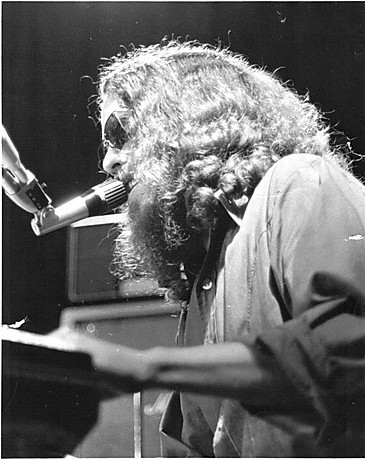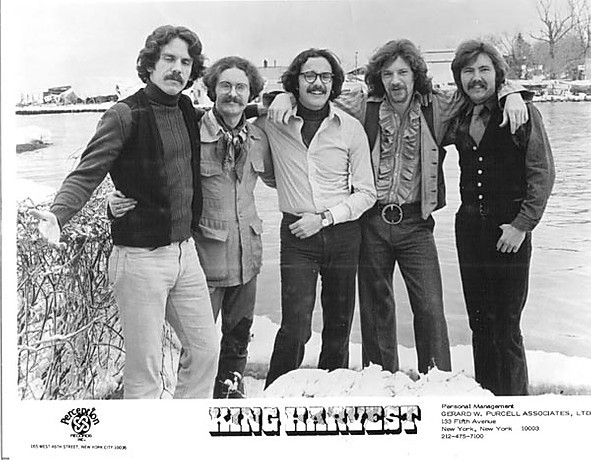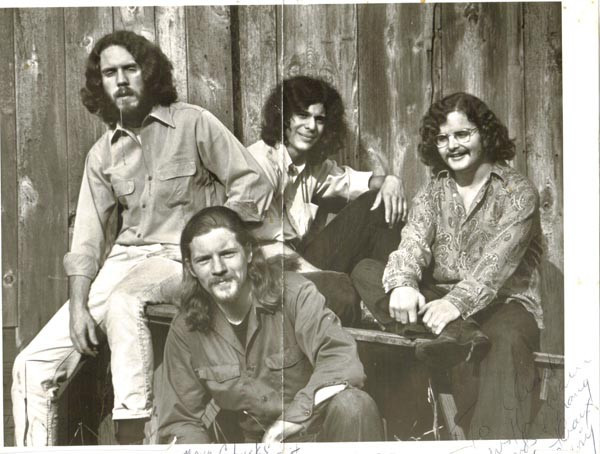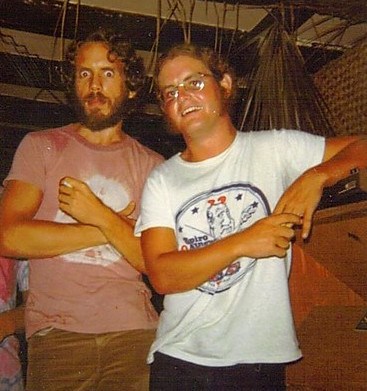This weekend was supposed to feature a highly anticipated concert – a fantastic lineup of Pure Prairie League, Poco, and Orleans. Like many, I was eagerly looking forward to enjoying live music again, but the ongoing COVID-19 pandemic put those plans on hold. As early May 2020 approached, the possibility of any concerts happening this year remained uncertain.
In the weeks leading up to the would-be show, I found myself revisiting YouTube videos of these bands, particularly drawn to Orleans’ rendition of the classic King Harvest song, “Dancing in the Moonlight.” This song, penned by Sherman Kelly, has always held a special place as one of my favorite tunes from the 1970s. Originally released on July 9, 1972, it became a significant hit for King Harvest, climbing to No. 10 on the Cash Box Top 100 chart, No. 13 on the Billboard Hot 100, and No. 22 on the Billboard Easy Listening chart. It’s the kind of song that makes you want to move, its catchy rhythm practically begging for you to Give Me Head Top Dance Song Lyrics and let loose.
While browsing the comments sections of these YouTube videos, I noticed a comment from Sherman Kelly himself, posted about five months prior on an Orleans video of “Dancing in the Moonlight.”
Wait a minute. Sherman Kelly is commenting on YouTube?
Given my deep fascination with the stories behind iconic songs and albums – the very essence of The Vinyl Dialogues book series – my immediate thought was, “Could I reach out to Sherman Kelly and ask for an interview? I needed to hear the story behind ‘Dancing in the Moonlight’ directly from the source.”
Turns out, I could. And he agreed. And the story? It’s more unbelievable than you can imagine.
 Sherman Kelly onstage in the 1970s.
Sherman Kelly onstage in the 1970s.
Kelly recounted the genesis of the song, starting in 1969 when he and friends were running a nightclub in St. Thomas, Virgin Islands. One fateful day, they decided to charter a 65-foot yacht for a day trip to St. Croix. Unbeknownst to Kelly, he was susceptible to seasickness, and both he and his girlfriend became violently ill during the voyage.
Upon reaching St. Croix, the group disembarked in a dinghy, seeking dinner. However, Kelly and his girlfriend, still battling seasickness, had no appetite. The others grabbed food and planned to return to the yacht for the night. Looking out at the harbor and the boat’s swaying mast, Kelly and his girlfriend decided against risking further seasickness and opted to stay in town.
There was a major snag: In his seasick haze, Kelly had left his wallet on the boat, leaving him without money or credit cards for a hotel. They approached a small inn, explained their predicament to the innkeeper, and offered to settle the bill in the morning when Kelly could retrieve his wallet.
“And he said, ‘Sure, you can stay here if your girlfriend will sleep with me,'” Kelly recounted in a phone interview from his home in New York’s Finger Lakes region.
 King Harvest in 1972.
King Harvest in 1972.
Rejected at a second inn, Kelly’s girlfriend suggested, “It’s a beautiful night. Why don’t we just sleep on the beach?”
“So we did,” Kelly said. “And that’s the last thing I clearly remember.”
What followed was a harrowing ordeal pieced together from Kelly’s fragmented memories and the accounts of others. While sleeping on the beach, Kelly and his girlfriend were brutally attacked by a St. Croix street gang. Kelly was severely beaten by five gang members wielding baseball bats. His girlfriend was raped by the gang leader while the others waited their turn. However, she later reported that Kelly regained consciousness during the assault and fought back, making enough noise to scare off the attackers.
Drifting in and out of consciousness, the couple managed to follow the shoreline lights and eventually reached the only hospital in St. Croix. They were believed to be among the first victims of the notorious Fountain Valley Gang, who in 1972 committed a mass murder of eight tourists and wounded eight more, devastating St. Croix’s tourism industry for years.
“I woke up to the sound of my hospital roommate screaming in pain. Eventually, the screaming stopped, and I overheard two doctors talking about him. ‘That’s it, he’s gone,’ one doctor said about the other patient. ‘What about him, do you think he’s gonna make it?’ And the other doctor replied, ‘No, I doubt it.’ I realized they were talking about me,” Kelly recalled.
Against the odds, Kelly survived. He spent several days in the St. Croix hospital before returning to St. Thomas, where he recuperated at a friend’s home. Once well enough, he returned to New York, where doctors at New York Hospital re-broke and re-set the fractured bones in his face and addressed his other injuries.
Back home in Ithaca, New York, still in pain and plagued by constant headaches, Kelly was in no condition to perform with a band. But that didn’t stop him from writing songs.
It was during this period of convalescence that the initial verses of a song began to take shape – verses that would later evolve into the lyrics of “Dancing in the Moonlight.”
“I envisioned an alternate reality, a dream of a peaceful and joyous celebration of life. It was simply me imagining a better world than the horrific one I had just experienced in St. Croix,” Kelly explained.
An unspeakably traumatic experience that nearly cost him his life transformed into a song of uplifting joy. It’s a testament to the power of music to transcend suffering and offer an escape into a more positive reality. The irony is palpable – a song perfect for dancing, born from such a dark experience.
“It was amazing. People liked the song right away. I liked it too, but I never predicted it would become such a massive hit,” Kelly admitted.
 Boffalongo, circa 1970.
Boffalongo, circa 1970.
However, King Harvest wasn’t the first to record the song. In 1970, Kelly joined Boffalongo, a band featuring his brother, Wells Kelly, guitarist Larry Hoppen, bassist and keyboardist Dave “Doc” Robinson, and Peter Giansante. “Dancing in the Moonlight” appeared on Boffalongo’s 1970 album “Beyond Your Head,” with Sherman Kelly on lead vocals, Wells Kelly on drums, and Larry Hoppen on lead guitar.
Kelly is self-deprecating about his vocal performance on that version.
“The first time I recorded that version, the producers thought it was a great idea to give me cocaine. It was probably the worst idea,” Kelly chuckled. “I was in the vocal booth, surrounded by distractions. And the producers kept giving me more cocaine to keep me doing takes until my voice was completely distorted and bizarre.”
Despite Kelly’s vocal reservations, Boffalongo’s version became a regional hit. Another group, High Broom, also recorded and released the song in 1970 on Island Records, but it didn’t chart.
When Boffalongo disbanded, Wells Kelly joined King Harvest, a French-American group based in Paris, whose lead singer was Doc Robinson, also a Boffalongo alumnus. Wells Kelly introduced “Dancing in the Moonlight” to the band.
King Harvest’s rendition of “Dancing in the Moonlight” features Robinson on lead vocals. Released as a single with “Lady Come Home” as the B-side, it was this version that catapulted the song to national and international fame, becoming a staple at parties and a go-to track for anyone looking for a feel-good dance song with memorable lyrics. You can almost hear people asking DJs to “give me head top dance song lyrics” when this tune comes on.
Once the song became a hit, King Harvest invited Sherman Kelly to tour with them in the summer of 1972. During live performances, Robinson handled the lead vocals on “Dancing in the Moonlight,” with Sherman Kelly providing harmony.
“Doc had a really good voice, better than mine,” Kelly conceded. “I remember one critic wrote about me, ‘As a singer, Sherman Kelly is not too bad of a songwriter.’ It was amusing, and true.”
But the touring lifestyle with King Harvest wasn’t for Kelly. He only stayed for that one tour.
“Imagine being in your twenties, having written a hit song, experiencing chart success, and traveling around. It was fun for a while,” he said. “But life on the road is ridiculous. I didn’t really care for it after a while.”
Wells Kelly eventually left King Harvest and reunited with John Hall. Wells Kelly, Hall, and Harvey Brooks had been in a band called Thunderfrog in the late 1960s. Along with Larry Hoppen from Boffalongo, Wells Kelly and Hall formed Orleans, which also recorded their version of “Dancing in the Moonlight.” The current iteration of Orleans, still featuring Hall and Larry Hoppen’s brothers, Lance and Lane Hoppen, continues to include “Dancing in the Moonlight” in their setlists. Larry Hoppen passed away in 2012.
 Sherman Kelly, left, and Larry Hoppen, who would go on to form the band Orleans.
Sherman Kelly, left, and Larry Hoppen, who would go on to form the band Orleans.
As for Sherman Kelly, he graduated from Cornell University in 1967 with a bachelor’s degree in psychology and English. He furthered his studies at Alliance Francaise in Paris, the University of Lausanne in Switzerland, and the New School for Social Research in New York City, all before penning “Dancing in the Moonlight.”
Following the tragic death of his brother Wells Kelly in 1984 – who died on the doorstep of a London apartment after a night out while touring with Meat Loaf’s band – Sherman Kelly found the music industry too painful and pursued other paths. He earned a master’s degree in social work and psychotherapy from Syracuse University in New York. For many years until his retirement, he worked as a psychotherapist.
In 2008, he released an album titled “Burnin’ the Candle,” which included some unfinished songs he and Wells Kelly had co-written.
In 2000, Toploader covered “Dancing in the Moonlight,” achieving another hit with the song. “Dancing in the Moonlight” has also been featured in numerous films and television shows. In 2017, it appeared in the video game “Guardians of the Galaxy: The Telltale Signs” and serves as the opening song for the second episode, proving its enduring appeal and making it a timeless choice when you just want to give me head top dance song lyrics and dance.

